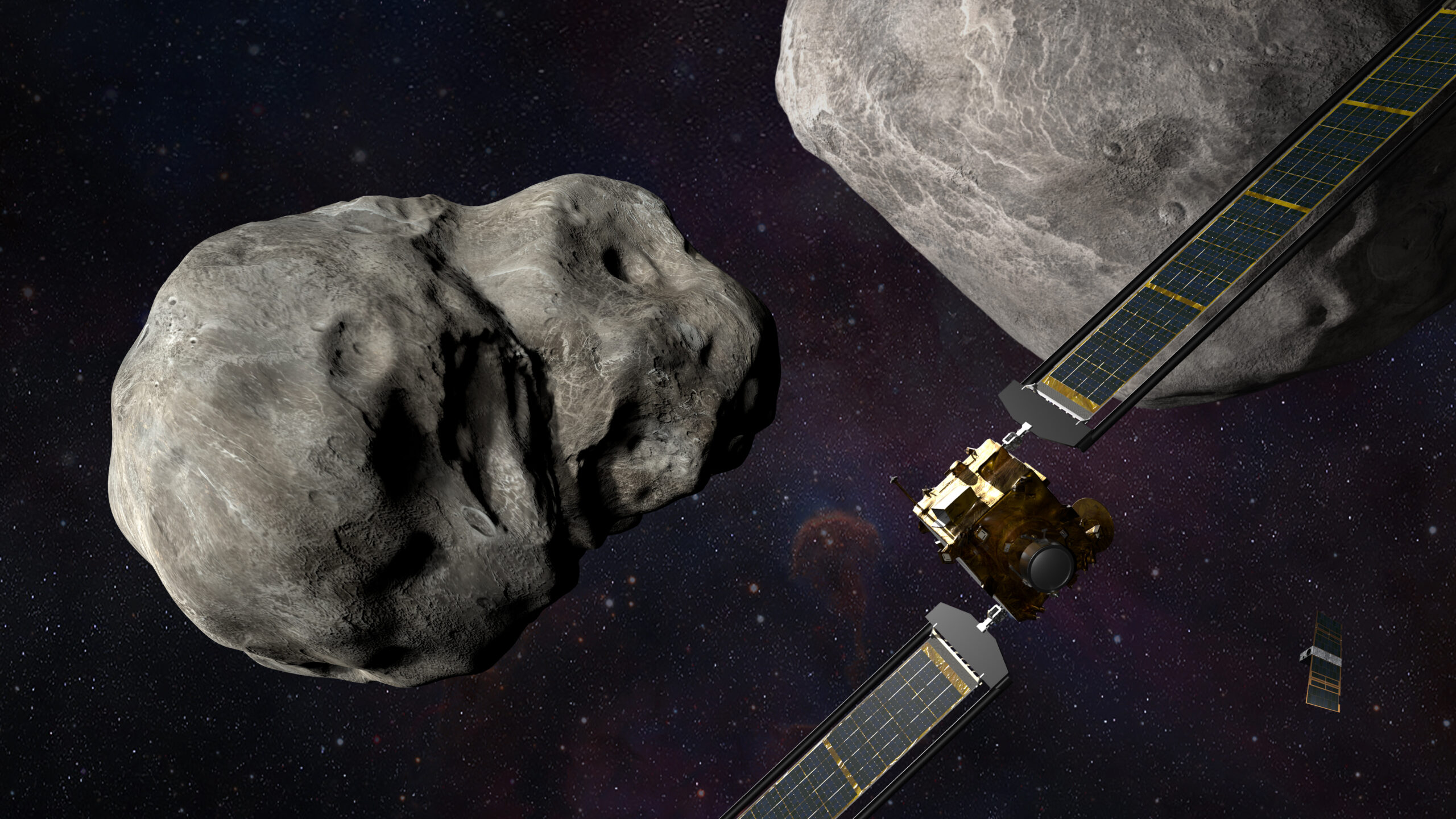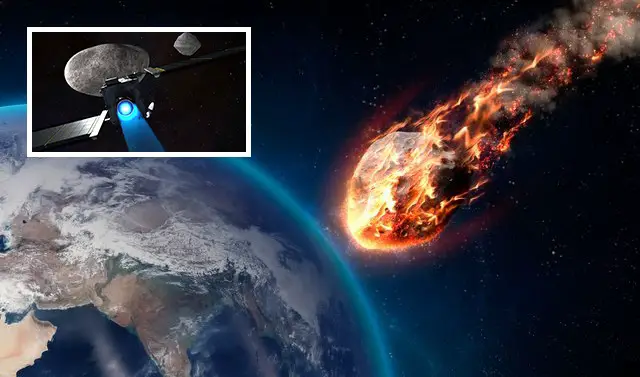Volcanic eruptions, earthquakes, storms, and tornadoes are all inevitable natural calamities. Scientists debate when not if, they will strike. Though people contribute to certain catastrophes, natural disasters have occurred long before humanity arrived. They are an unavoidable part of life on Earth.
A collision between an asteroid or comet and the Earth, on the other hand, does not have to happen. On a new edition of Unexplainable, Vox’s science podcast about unresolved mysteries, scientific writer Robin George Andrews says, “It is the one natural calamity, ultimately, that you could cancel out.”
“You can not stop volcanoes from erupting, earthquakes from occurring, or storms from occurring,” Andrews adds. “However, an asteroid?” The hazard is gone if you merely flip it out of the path of the Earth.”
Although this may seem to be science fiction, scientists are already working on it. It is certainly doing better than in the movie Do not Look Up, in which two astronomers try to persuade the public that a deadly comet is on its way. The US government is devoting time and resources to averting an asteroid tragedy in the future.
“We are creating the infrastructure here to enable a danger to be handled in the future and save lives,” says Kelly Fast, a NASA scientist who works in the Planetary Defense Coordination Office’s Near-Earth Object Observations Program. “It is my mission to identify asteroids before they find us,” she explains.
Fast and her colleagues still have a lot of work ahead of them, both in terms of finding and cataloguing asteroids and comets that potentially threaten Earth, as well as devising a real plan of action in the event of a collision. However, work on comets and asteroids is already underway, making them an unusual example of a threat that is receiving addressed before it is too late.
People sometimes ask why humanity did not do more to prepare for — or perhaps avoid — calamities after they occur. That is a question we have concerning the pandemic and climate change. Humanity seems to be more reactive than proactive on many occasions. In that view, our asteroids and comet preparations are a happy tale. It is the tale of how, when experts warned of a danger, the government chose to take action.
How to prevent an asteroid disaster
Step 1: Find the asteroids
Scientists discovered parts of a massive comet going directly for Jupiter in 1993. The comet was almost a mile wide before it disintegrated. This item may have triggered a catastrophic extinction if it had collided with the Earth. It was like a fireworks display for astronomers. They knew the pieces would fall in July 1994, so they kept an eye on them via a telescope.
“Oh, my goodness. “It was incredible,” recalls Fast, who was working as a planetary scientist at the time. “Some of the largest impact zones may accommodate a couple of Earths, if not more.”
Part of the impact erupting out of Jupiter’s atmosphere may be seen in the bottom left of this infrared film (one of Jupiter’s moons, Io, is the bright sphere on the right).
The scientists were intrigued and worried at the same time. Fast thinks it served as a wake-up call: “This does happen, can happen in the solar system.”
Lawmakers were also aware of the situation. In 1998, Congress directed NASA to locate at least 90% of asteroids and comets with a diameter of one kilometer or more that will approach Earth’s orbit. (Asteroids are chunks of rock and metal in orbit around the sun; comets include ice and originate from farther out in the solar system; their devastation potential is similar.) Large things like this only come around once every half-million years, posing a hazard to life on Earth.
We can not do anything about an asteroid or comet unless we know it is on our way, therefore detecting them is a smart first step toward avoiding a calamity. Scientists can predict an asteroid’s track ahead in time after it is discovered to assess whether it is likely to travel dangerously near to Earth.

The good news is that NASA claims to have discovered more than 95% of the massive, doomsday-sized asteroids. None seem to be a danger to the planet.
There are, however, more. Congress raised the mission’s bar in 2005, directing NASA to find asteroids measuring 140 metres or more, or roughly the size of a skyscraper.
They are dubbed “city killers” because they have the potential to level a city and cause widespread devastation, even if they do not necessarily result in a global apocalypse. In each given century, there is a 1% probability that one of these asteroids may impact.
“The chances are so tiny” that it will happen in our lifetimes, according to Fast. However, in 2019, an asteroid the size of this one passed between the Earth and the moon, and NASA missed it. Rare things may happen, and they can have disastrous repercussions.
Rarity should not be used as an excuse for inactivity. (Even smaller asteroids, such as the 17-meter rock that erupted above Chelyabinsk, Russia, in 2013 with the power of a nuclear bomb, are more frequent and harder to observe.) Fortunately, our atmosphere tends to break up smaller asteroids before they can reach the earth.)
NASA still has a long way to go in documenting possible city-killers. “We have discovered roughly 40% of them,” Fast adds. At the current rate of discovery, it might take another 30 years to uncover the remainder, while some proposals are in the works to deploy a specialized space telescope to expedite the hunt.
Boop the asteroids in the second step
Assume that scientists detect a 200-meter asteroid on its way to Earth. Is there anything they can do about it? That is the question NASA scientists are attempting to answer right now.
Hollywood has come up with some outlandish ideas for dealing with asteroids, such as deploying nuclear weapons to smash them or throw them off course — this is the fundamental narrative of the 1990s epics Armageddon and Deep Impact. This technique does have some validity. However, there may be a far simpler and safer approach to deal with an asteroid headed for Earth: just nudging it out of the path.
The Double Asteroid Redirection Test (DART), a car-size box equipped with solar panels, was launched by NASA last year. It is now on route to Dimorphos, a 160-meter asteroid. DART will collide with Dimorphos at a speed of 24,000 kilometers per hour in the autumn (about 15,000 miles per hour).

Dimorphos is a “moonlet” asteroid, meaning it circles Didymos, a bigger asteroid, much way the moon orbits the Earth. If all goes according to plan, the impact will alter its orbit, demonstrating that a large chunk of rock in the center of space can be redirected. (The gravitational pull of the bigger asteroid will keep Dimorphos from flying off in a different direction, such as toward Earth.)
The definition of a long shot is DART. Andrews reveals on Unexplainable, “This has never been attempted before.” If it does not work, that does not rule out the possibility of deflecting an asteroid in the future. However, it is possible that greater force will be required than DART can provide.
“Basically, this test is addressing the question: How large of a thud do we need to give these city-killing asteroids to preserve the Earth if we have to?” Andrews explains.
If DART is successful, NASA may include a similar method into its anti-asteroid effort. “They may send a precursor expedition to examine it beforehand if they see an asteroid headed near Earth,” Andrews adds. Scientists may investigate the asteroid’s composition and calculate how much force it will take to divert the rock based on those early measurements. “Then you could dispatch a DART-style mission.”
The issue of asteroids colliding with the Earth has yet to be addressed. Even still, it is feasible that scientists like Fast may be recognized as foresighted heroes who built the framework for a planetary defense system a few hundred years from now. “There is no greater gift that America’s space agency can give” than future human protection, according to Fast.
Even if these tragedies do not strike in our lives, we may be proud of the progress that has been done. It is a means of being good ancestors to future generations. Perhaps, among the many issues to solve and calamities to avoid, we can truly solve one.
Source: VOX

